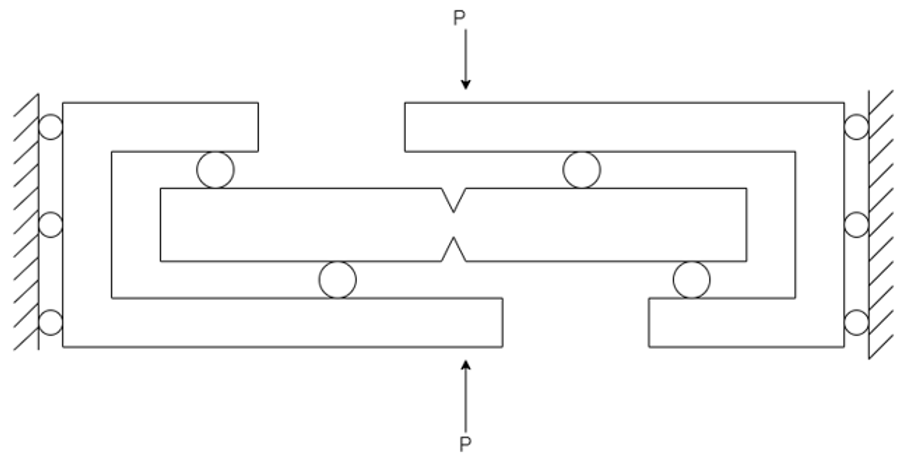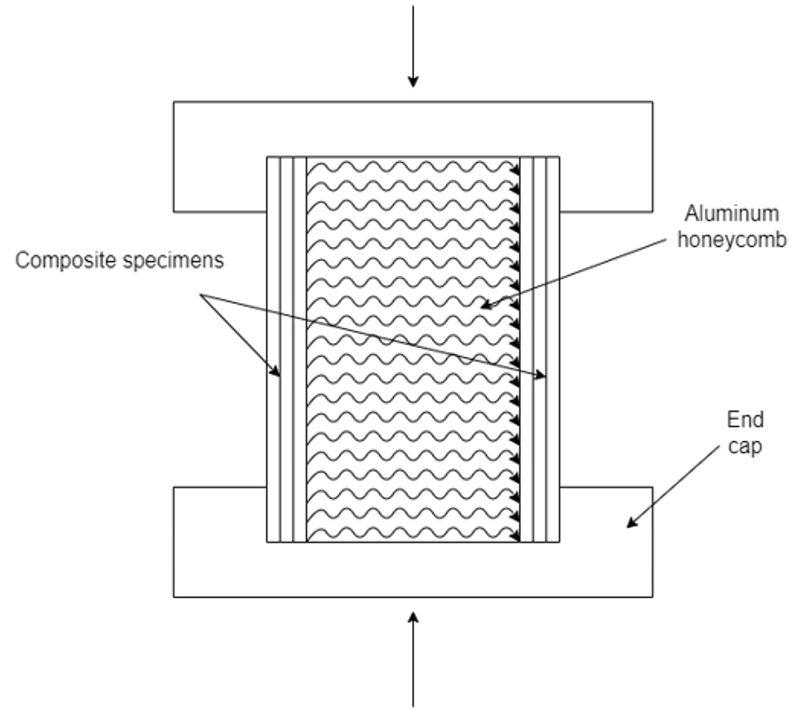This set of Composite Materials Multiple Choice Questions & Answers (MCQs) focuses on “Static Mechanical Properties – Set 3”.
1. Which is the first developed test for determining compression properties of composites?
a) IITRI test
b) Celanese test
c) Sandwich cores test
d) Sandwich edgewise compression test
View Answer
Explanation: Celanese test was the first ASTM standard test developed for testing compression properties of fiber-reinforced composites. However, it is no longer a standard test because of its several limitations and deficiencies.
2. What is the ASTM standard test method for compressive properties of composite materials?
a) ASTM D3039
b) ASTM D3410
c) ASTM D2584
d) ASTM D2734
View Answer
Explanation: ASTM D3410 is the standard test method for determining the compressive properties of composite laminates. The IITRI test, first developed at Illinois Institute of Technology Research Institute, is adopted as the ASTM D3410 standard compression test for fiber-reinforced composites.
3. Which of these compression tests uses flat wedge grips?
a) IITRI test
b) Sandwich cores test
c) Celanese test
d) Sandwich edgewise compression test
View Answer
Explanation: The IITRI test uses flat wedge grips which can accommodate variation in specimen thickness. It also provides better contact between collet and wedge which improves the axial alignment.
4. The longitudinal compressive strength of a 0° laminate depends only on the fiber type.
a) True
b) False
View Answer
Explanation: The longitudinal compressive strength of a 0° laminate depends not only on the fiber type but also on the fiber volume fraction, fiber length–diameter ratio, matrix yield strength, fiber alignment, fiber straightness as well as fiber–matrix interfacial shear strength. These factors have significant effects on the compressive properties and hence it is very important.
5. Which fiber reinforced composites exhibit virtually no difference between tensile and compressive properties?
a) Kevlar-49 reinforced composites
b) Carbon fiber reinforced composites
c) Glass fiber reinforced composites
d) Boron fiber reinforced composites
View Answer
Explanation: The boron fiber-reinforced composites exhibit virtually no difference between the compressive and tensile properties. Whereas, the compressive modulus and strength of Kevlar 49-reinforced composites are much lower than their tensile modulus and strength. Carbon fiber-reinforced composites and glass fiber-reinforced composites exhibit slightly lower compressive modulus and strength than their respective tensile values.
6. What is determined using the ASTM test method D790?
a) Tensile properties
b) Compressive properties
c) Flexural properties
d) Shear properties
View Answer
Explanation: ASTM test method D790 is used to determine flexural properties like flexural modulus and strength. A composite beam specimen of a rectangular cross-section is loaded in either a three-point or a four-point bending mode in this test.
7. In angle-ply laminates, a bending moment creates both twisting and bending curvatures.
a) True
b) False
View Answer
Explanation: Twisting curvature and bending curvatures influences the flexural modulus. The twisting curvature can be reduced by a decreasing degree of orthotropy and an increasing length–width (L/b) ratio.
8. What is ASTM D3518?
a) ±45 Shear test
b) 10° off-axis test
c) Losipescu shear test
d) Celanese test
View Answer
Explanation: ±45 Shear test ASTM D3518) is a standard test method for determining In-Plane shear properties such as shear modulus, ultimate shear strength of unidirectional fiber reinforced composites. The ±45 shear test involves uniaxial al tensile testing of a symmetric laminate.
9. Which in-shear test process is shown in the diagram?

a) 10° off-axis test
b) Iosipescu shear test
c) ±45 Shear test
d) Sandwich cores test
View Answer
Explanation: The Iosipescu shear test (ASTM D5379), developed by Nicolai Iosipescu, is used to determine the shear strength and modulus of the composites. It uses a double V-notched test specimen. The presence of notch creates a shear stress concentration at the notch root, which increases with increasing orthotropy but reduces with increasing notch root radius and notch angle. While the bending moment at the notch plane is zero, a uniform transverse shear force is created in the gage section of the specimen.
10. Identify the compression testing process shown in the diagram.

a) IITRI test
b) Sandwich edgewise compression test
c) Celanese test
d) Sandwich cores test
View Answer
Explanation: The sandwich edgewise compression test is used to determine the compression properties of a fiber reinforced composite material. In this test, aluminium honeycomb is bonded with two straight-sided specimens that provide the necessary support for lateral stability. The end caps where the compressive load is applied, are used for preventing end crushing as well as supporting the specimen.
Sanfoundry Global Education & Learning Series – Composite Materials.
To practice all areas of Composite Materials, here is complete set of 1000+ Multiple Choice Questions and Answers.
If you find a mistake in question / option / answer, kindly take a screenshot and email to [email protected]
